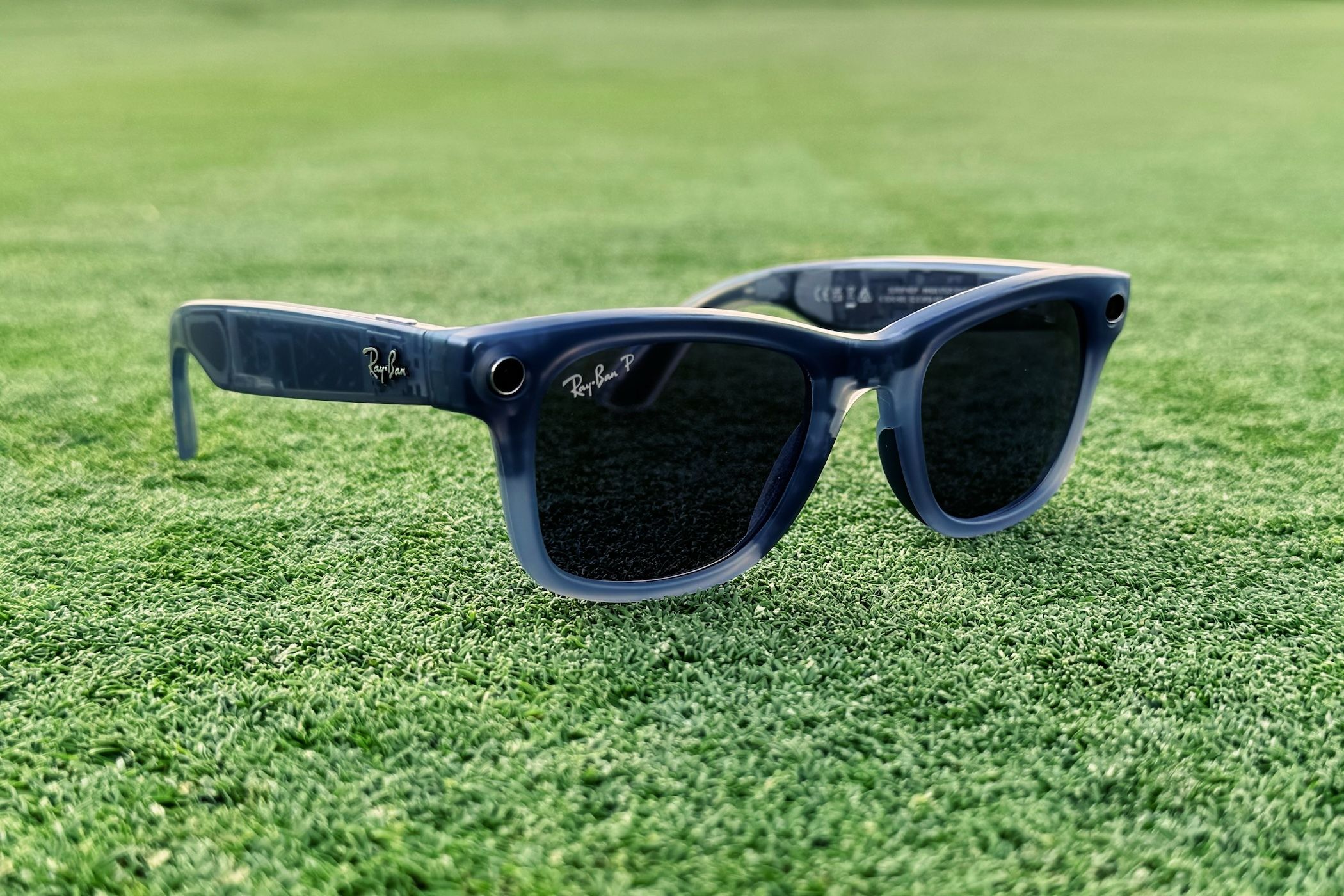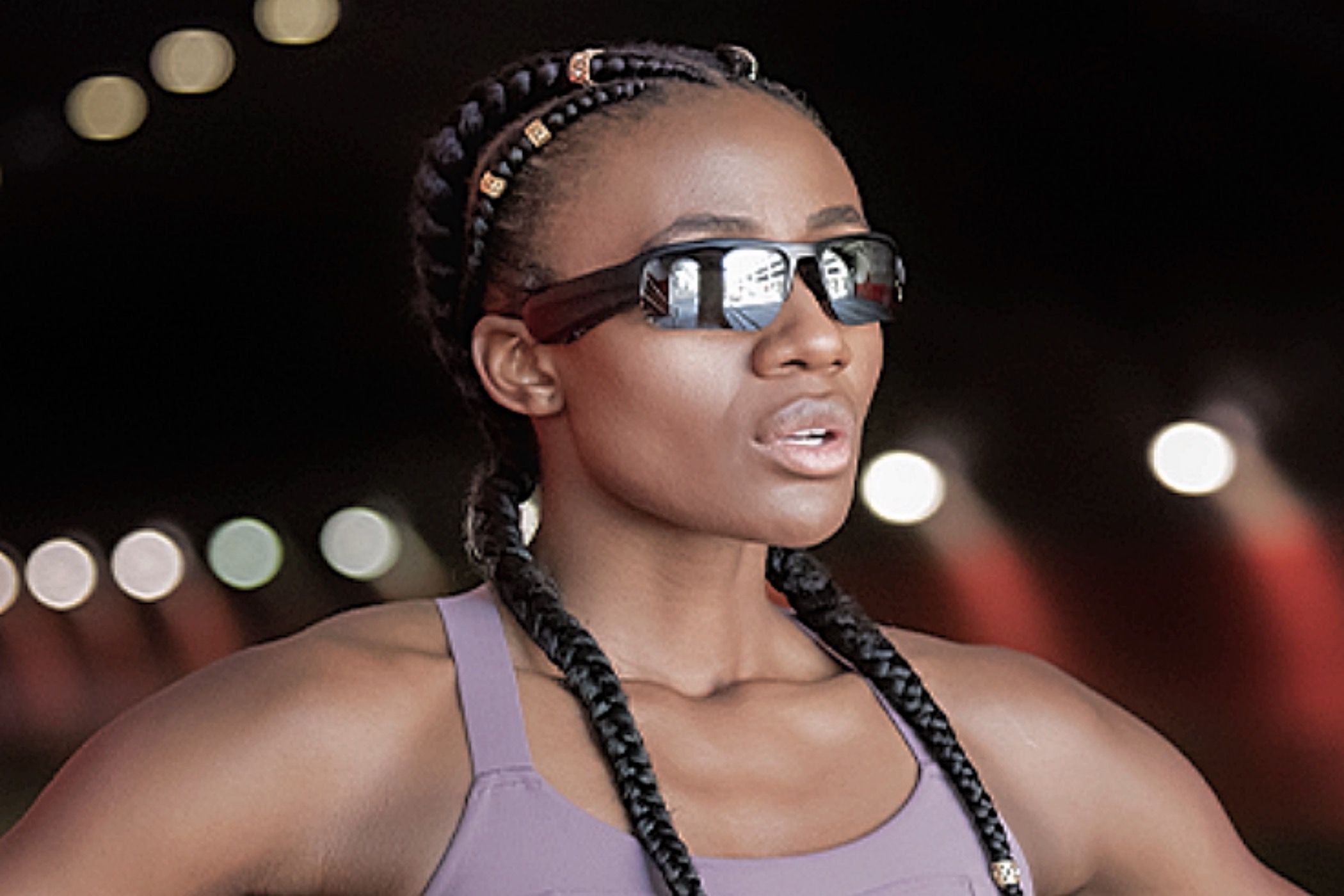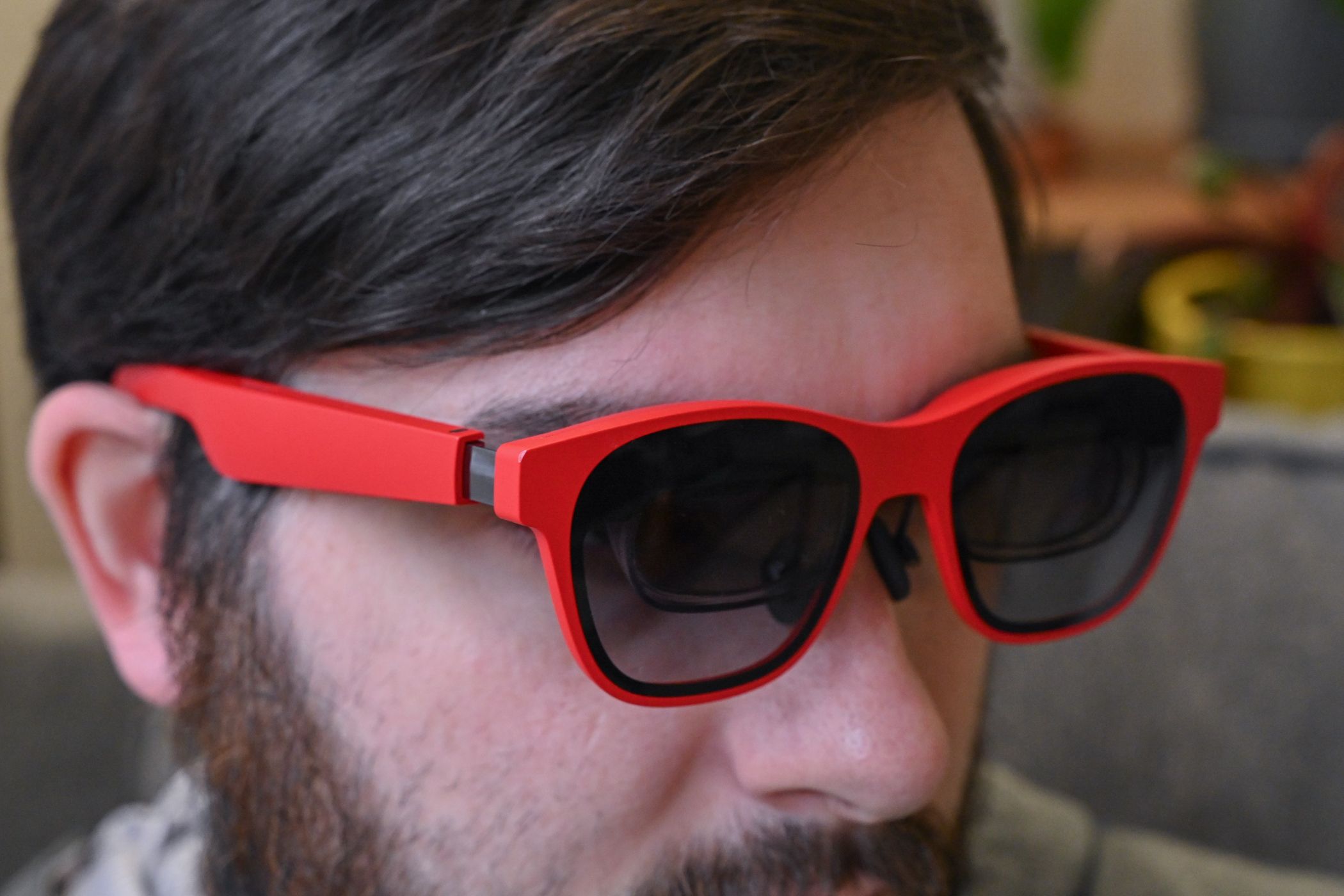With companies continually improving the designs and features of smart glasses, they are constantly evolving into more stylish and user-friendly wearable technology. While they may not have achieved mass-market popularity yet, the tech is showing significant growth potential thanks to better aesthetics, more intuitive interfaces, and improved functions.
Best Smart Glasses Overall: Ray-Ban Meta Smart Glasses
Meta and Ray-Ban released the Ray-Ban Meta Smart Glasses, which succeeded the Ray-Ban Stories glasses and come with significant improvements in several key areas. First, these glasses are much more comfortable to wear. They are lighter and look and feel similar to a pair of ‘dumb’ Ray-Bans.
Meta has added AI features, and while not perfect, it’s a step in the right direction and will only improve with updates. Smart glasses can’t compete with smartphones for photography. But if you just want to take some fun snaps and videos, the 12MP camera and Full HD video will suffice. Thanks to improvements in the mid and high-frequency range, audio lovers can enjoy podcasts and audiobooks with clarity. However, the bass quality still hasn’t reached satisfactory low-frequency levels.
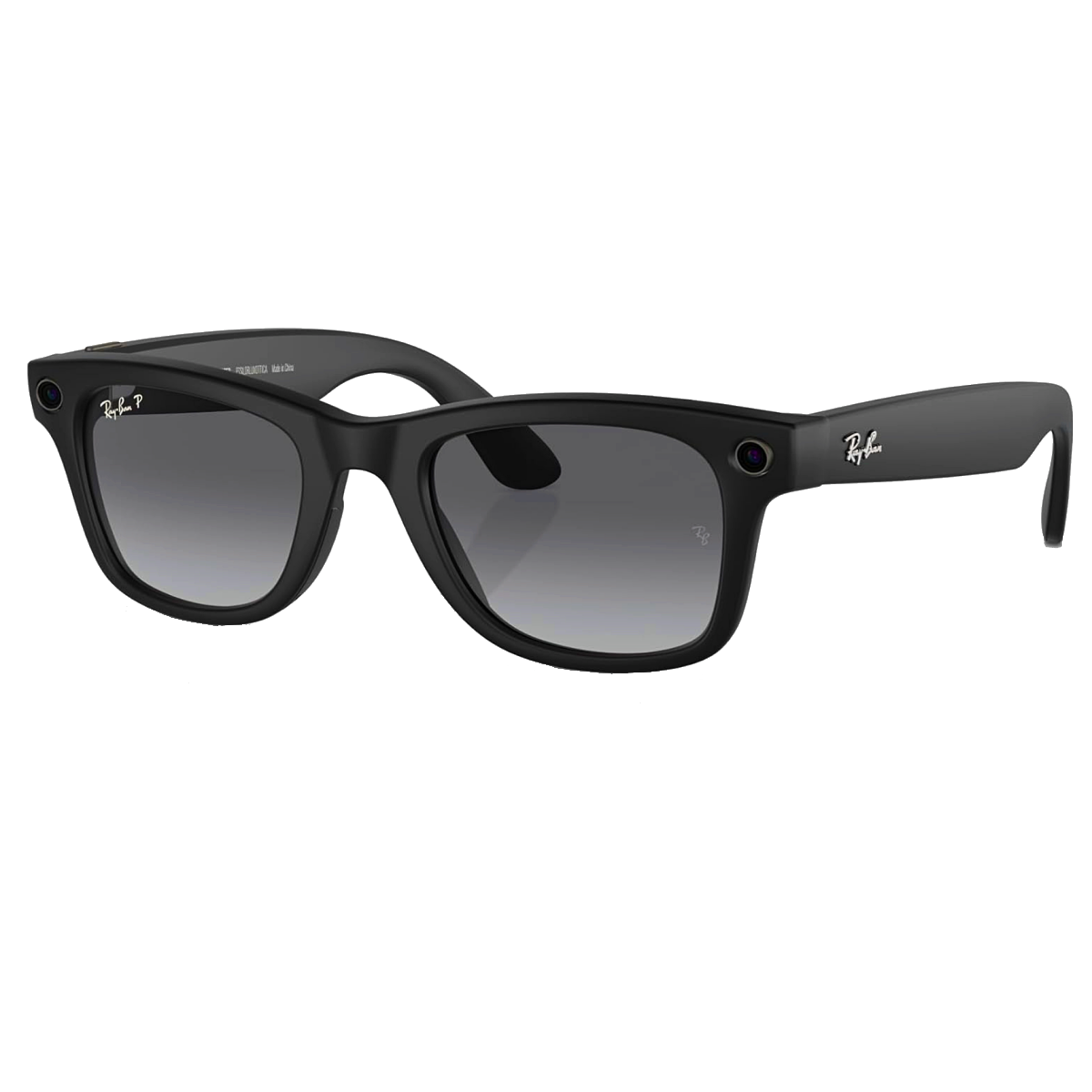
Ray-Ban Meta Wayfarer
Ray-Ban Meta Smart Glasses offer improved comfort and new AI features. They also provide immersive spatial audio for podcasts and music, while the stylish design of both the glasses and case will satisfy the fashion-conscious.
- 32GB storage
- Up to 36 hours of battery life with charging case
- Excellent call quality
- Stylish and slimline charging case
- Useful AI voice assistant
- IPX4 water and sweat resistance
- Can only livestream on Meta social platforms
- Videos can only be up to one minute in length
- Lenses are not interchangeable
- Conversational AI is only available in the US for now
Best Budget Smart Glasses: Razer Anzu
The Razer Anzu is an aesthetically pleasing and affordable pair of smart glasses for anyone seeking style on a budget. The frames are made from glossy black plastic and are available with round or rectangular lenses in small or large sizes.
The glasses come with two sets of clip-on lenses, which you can easily pop into the frame. One is a blue-light filtering pair that helps protect your eyes from harmful computer-screen light emissions. Once outside, you can easily replace them with the polarized pair for protection from the sun’s UV rays.
Audio-wise, the Razer Anzu glasses perform well. The bass is a little flat for some music genres. However, a good mid-range makes them excellent for voice calls, Zoom meetings, and podcast listening. Battery life is also pleasing at around five hours, and the glasses conveniently power off automatically when folded.
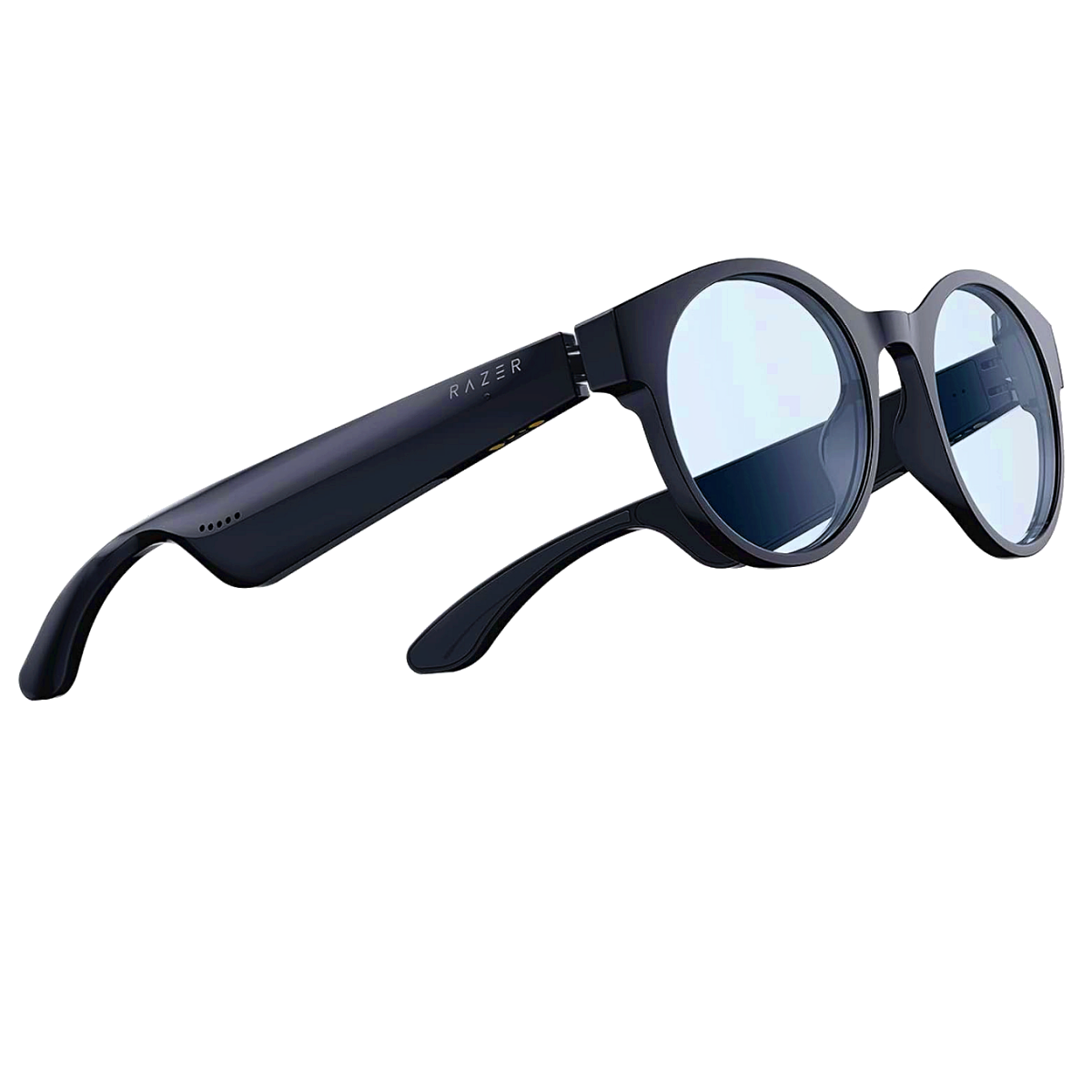
Razer Anzu Smart Glasses
The Razer Anzu smart glasses are a sleek, stylish choice for those also seeking value. With customizable clip-on lenses, different fit options, and reliable audio performance, they are the perfect combination of style, functionality, and affordability.
- IPX4 splash resistant
- Tap gestures are customizable
- Up to 60-meter Bluetooth range
- Voice-assistant compatible
- Low-latency audio
- Pre-installed tap gestures might take a bit of practice
Best Smart Glasses for Sports: Bose Frames Tempo
With an IPX4 rating, the Bose Frames Tempo smart glasses are resistant to sweat and light rain, making them a good choice for running outdoors or in the gym. And, with an excellent battery life of up to eight hours, they'll comfortably last through your workout.
The fit is tighter than other Bose Frames because they are specifically designed for sport. These frames will stay stuck to your head no matter how hard you push yourself.
Additionally, sound quality is of the same high standard as that of other Bose smart glasses, like the Bose Frames Sopranos. The dual beam-forming array microphones decrease wind noise and improve call quality.
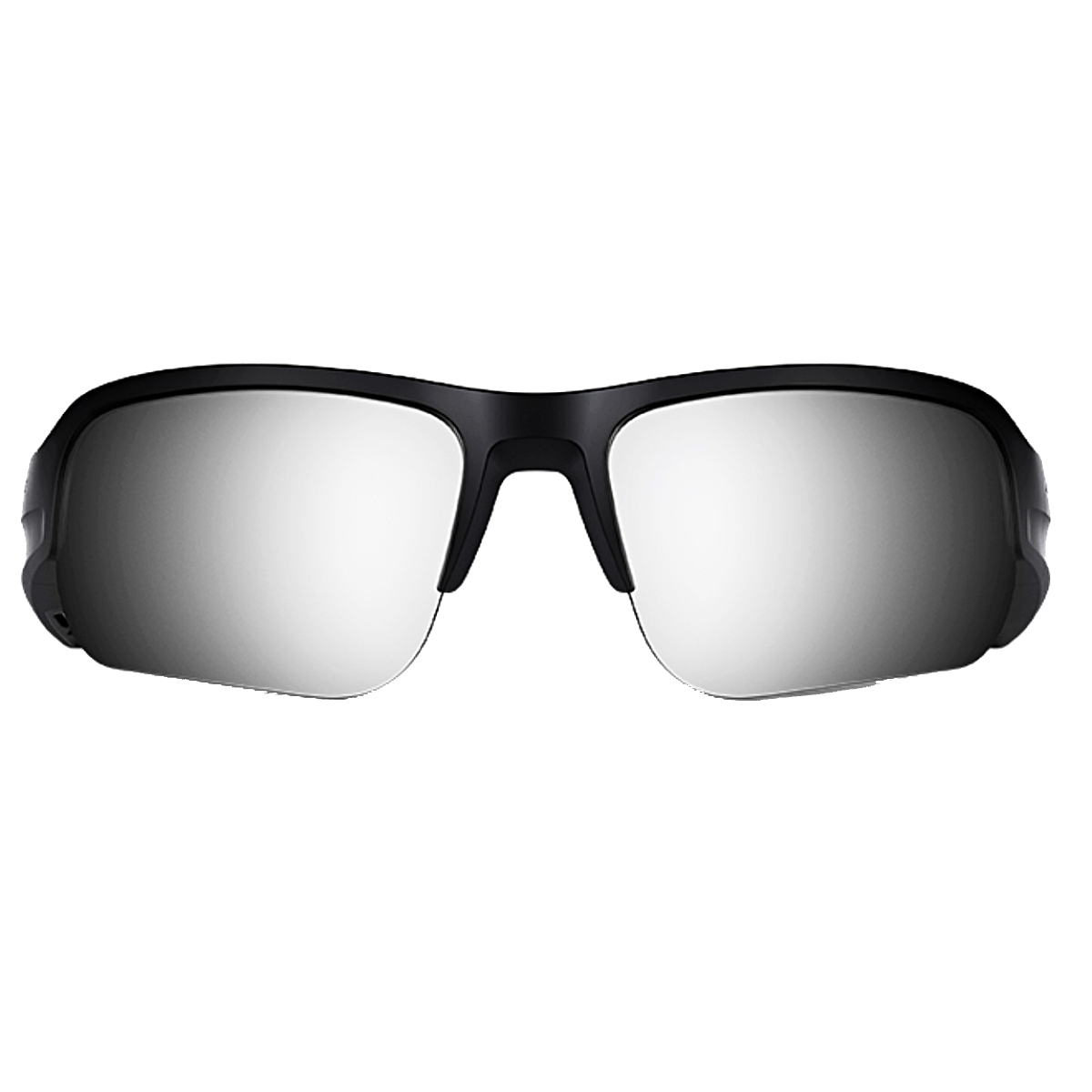
Bose Frames Tempo
The Bose Frames Tempo smart glasses are ideal for getting active with hobbies and sports. They offer water and sweat resistance, good battery life, a secure fit, and fine sound quality. With these smart sunglasses, you'll experience the perfect blend of performance and style during outdoor activities.
- Tight-fitting for athletes
- IPX4 water-resistance
- Silicone nose pads and flexible temple grips
- Polarized, shatter-resistant lenses
- Only one size
- No camera
Best Smart Glasses for Entertainment: Rokid Max AR Glasses
While the actual AR experience is limited, the Rokid Max AR Glasses are among the industry leaders if you’re seeking a pair for purely entertainment purposes. These glasses basically provide an immersive virtual screen (equivalent to 360 inches at 10 meters) with a wide field of view (50 degrees).
Just put them on, and you can enjoy movies, shows, and other content anywhere you like. They are ideal at home and for frequent fliers who can just sit back and enjoy widescreen entertainment. The picture quality isn't compromised, either. These glasses boast a micro-OLED display in each eye, and images are sharp, bright, and colorful.
For those who are near-sighted, the diopter adjustment dials mean you can take out the contacts and enjoy videos like anyone else. They’re also ideal if you would like a large screen for work on your laptop.
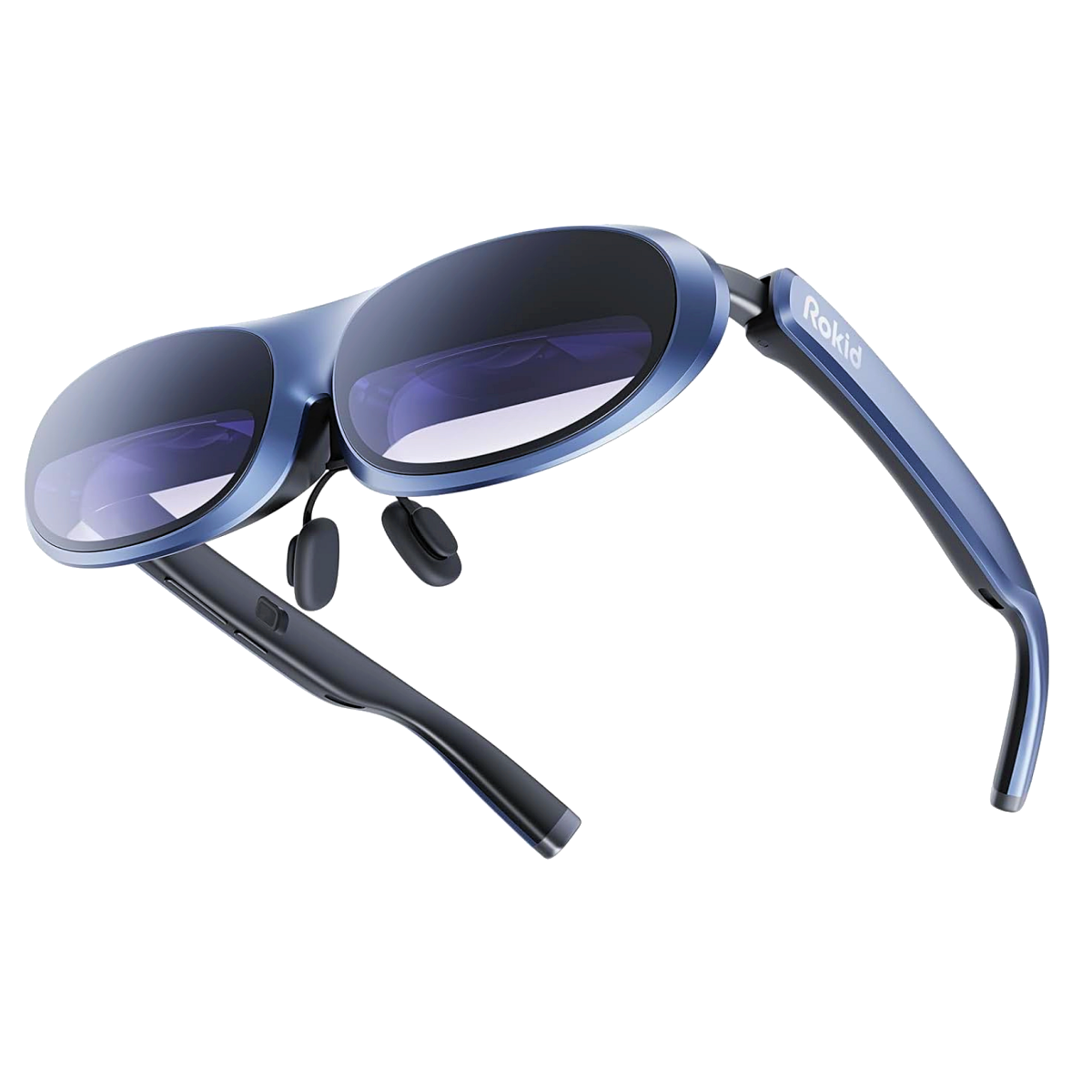
Rokid Max
Rokid Max AR Glasses offer a wide, immersive screen with sharp and colorful image quality, perfect for home or travel. With lightweight comfort and adjustable settings, you can enjoy entertainment of your choosing with ease.
- Huge, immersive display with quality images
- Excellent speaker system
- Thin, lightweight (75g), and comfortable to wear
- Easy screen-mirroring
- 3DoF head tracking
- Lack of quality AR apps
- Expensive
Best AR Glasses: XREAL Air 2 Pro AR Glasses
The XREAL Air 2 Pro AR Glasses generate a vast virtual screen of 330 inches and deliver a 120Hz refresh rate in Full HD. The colors are natural and vibrant, with good contrast and brightness. In addition, the spatial audio experience is first-class. The Directional Audio tech minimizes sound leakage and ensures you are disturbing no one.
The glasses also feature three levels of electrochromic dimming, letting you filter out ambient light to suit your needs. However, individuals with nearsightedness might want to consider investing in the optional replaceable lens for added convenience. But the Air 2 Pros are comfortable even when wearing your eyeglasses underneath.
However, some of the advanced features, including connecting to a gaming console, will need the XREAL Beam, which acts as a hub, while iPhones older than iPhone 15 will need the XREAL Adapter.
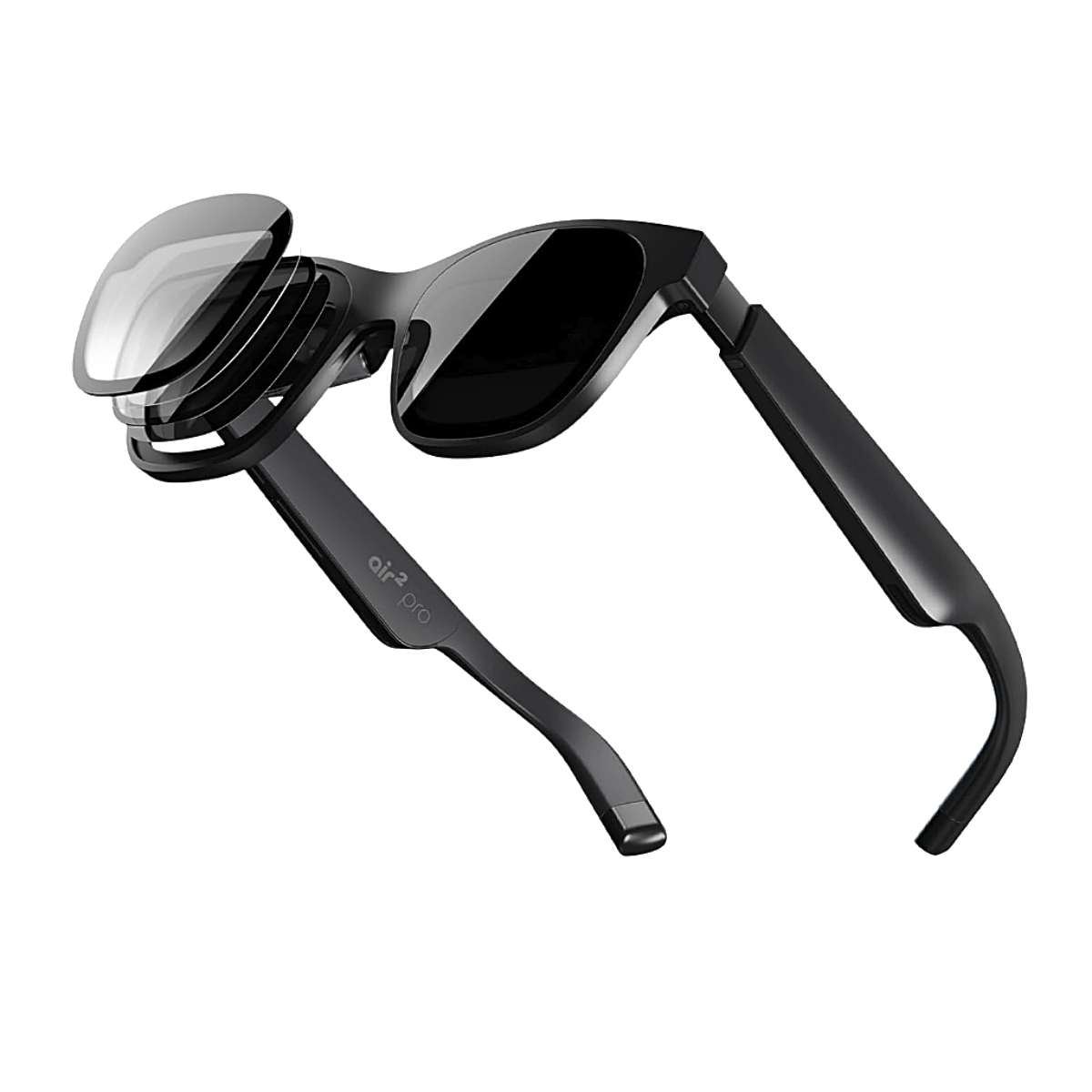
XREAL Air 2 Pro AR Glasses
The XREAL Air 2 Pro AR Glasses offer a huge virtual screen with vibrant colors and immersive audio, accompanied by comfortable wear and customizable dimming options to enhance your viewing experience.
- TUV Rheinland-certified Eye Comfort and Low Blue Light
- Leading AR image and audio quality
- Wide 46-degree FOV
- Lightweight and comfortable
- No diopter adjustment dials
- Pricey prescription lens inserts
FAQ
Q: What are smart glasses?
Smart glasses are special glasses that let you do various things, like access digital information, receive notifications, make calls, and capture photos or videos, among other features. They may also allow you to interact with augmented reality apps, which are displayed and controlled in your field of vision.
These are just some of the features that make smart glasses what they are, but different models offer various features.
Q: Do smart glasses have cameras?
Some, but not all, smart glasses have cameras. However, the photo and video capability typically found in smart glasses hasn’t quite reached the level of smartphone cameras yet.
Cameras in smart glasses also introduce privacy issues because wearers can record discreetly, which can make people feel uncomfortable. This has been taken into consideration with the designs of some newer models of smart glasses. The Ray-Ban Meta Smart Glasses, for example, feature a pulsating LED capture light that shines when the wearer is recording. And, said wearer cannot turn off this light.
Q: Can smart glasses make phone calls?
Most smart glasses can make phone calls, and the call quality is generally satisfactory. However, you have to remember that smart glasses don’t have active noise cancelation or even noise isolation. So, if you’re in a noisy environment, it could be difficult for the person on the other end to hear you.
However, smart glasses can offer compatibility with voice assistants for hands-free calling, or you can even use them as a Bluetooth headset, so they definitely have their place regarding voice calls.
Q: Can I get prescription smart glasses? How do I do so?
Several brands offer prescription smart glasses, but the option for prescription lenses sometimes comes at an extra cost. Some smart glasses let you wear regular eyeglasses underneath them. Others, like the Rokid Max AR Glasses,, have nifty diopter adjustment dials that are ideal for nearsighted people.
Many manufacturers allow you to choose from various frame styles and lens types, including prescription lenses, just like regular glasses. However, you could also discuss your prescription needs with an optometrist. They can advise you on compatible smart glasses with lenses that fit your prescription.


